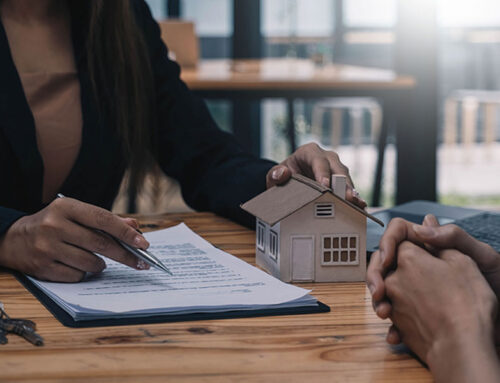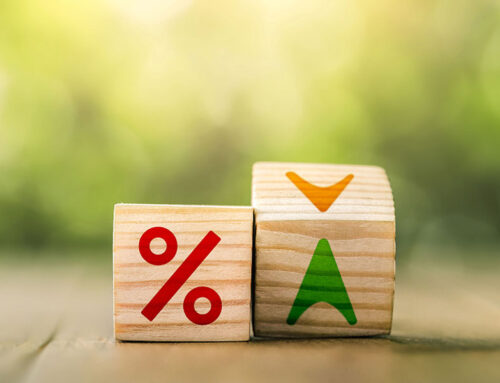Before I began flipping houses, I had no idea how much it would cost. I’d seen the shows on TV and heard stories about people quitting their jobs to start their own real estate investment firms and assumed it would be an easy way to break out of the corporate grind myself. I quickly realized how TV had fictionalized the industry. I was not prepared for all of the costs involved in short-term real estate financing, house renovations, and monthly bills, and it was frustrating to watch all the potential go down the drain when a house sat on the market for months. I wish I’d had someone tell me what to expect.
Determining the Average Cost to Flip a House
Now, there’s no set cost that can apply to all houses. When it comes to flipping houses, there are many variables involved, including the location, size, and condition of the property. What I can do is explain the biggest and most common up-front costs and monthly fees you can expect to pay, so you can determine the average cost to flip a house in your city.
Cost of the Property
Commonly the largest cost involved in flipping a house is the cost of the property itself. The more you spend to purchase a house, the higher your after repair value (ARV) needs to be in order for you to benefit from the fix-and-flip. Before you purchase a property to flip, you should compare it to similar properties in the same area both to make sure your proposed ARV won’t price you out of the neighborhood, and to ensure you’re not paying too much for the property in its current condition. One popular rule of thumb is that you should be paying around 70% of the ARV of a property, minus the rehab costs, to ensure you have a decent ROI.
In addition to the price of the property itself, you should factor in closing costs. These are the fees paid at settlement, and they usually include title insurance, transfer taxes, and financing fees. The closing costs will vary, and sometimes as a buyer, you can negotiate for the seller to pay some or all of your share of these fees. On average, though, you should expect your closing costs to be about 5% of the property’s purchase price.
It’s important to factor closing costs into your budget for the flip so you can better judge your ROI from the after repair value. If you purchase a property for $200,000, your average closing costs would be $10,000, meaning the actual price to buy that home is $210,000. If the closing fees on a home eat into your ROI, then the property may not be a good candidate for a flip.
Cost of Rehabbing the House
The cost of renovating a house is often the second major expense to factor into your budget and ROI. You’ll have to pay for the materials and labor in addition to any appliances that need to be ordered and installed. Some house flippers save money by doing repairs themselves, but if you don’t have contracting experience or you purchased the house with a loan that requires licensed contractors, you’ll have to pay for labor.
In addition to paying for labor and materials, you’ll also have carrying costs to pay for the duration of the rehab. The longer your renovations take, the longer you’ll need to pay these monthly costs, further whittling down your budget and ROI. That’s why it’s important to use your network to find trustworthy contractors and vendors who can get the job done on schedule while staying on budget.
Carrying Costs to Flip a House
Carrying costs refer to the recurring payments you’ll have to make every month from the time you purchase your investment property until you sell it. Some common carrying costs include:
- Financing costs
- Insurance
- Utilities
- Property tax
I’ll break down each of these costs and explain how they can affect your budget and ROI.
Financing Costs
Financing costs are your loan payments, including interest and any other financing fees. Typically, fix-and-flip loans have a high interest rate and a short-term repayment schedule. It’s important to budget for these costs, but carrying these loans for too long will significantly impact your budget and destroy your ROI, so you should plan to finish your renovations and sell your property as quickly as possible.
Vacant or Unoccupied Property Insurance
The insurance you’ll need to purchase for the house you’re flipping is called vacant or unoccupied property insurance, and it’s a little different from a typical homeowners insurance policy. Vacant or unoccupied property insurance covers your property if it’s broken into, vandalized, or damaged by a storm during the flip. The cost varies based on the location and value of the house, as well as how long you expect the property to remain vacant. You can typically expect to pay around 50% more for vacant or unoccupied property insurance than you would for regular homeowners insurance, but regular homeowner’s insurance will usually not cover your home if it’s been unoccupied for more than 30 days, making this an essential carrying cost for a fix-and-flip.
Monthly Utilities
Some inexperienced flippers forget to account for utility costs in their budget, because the house will be unoccupied for the duration of the flip. However, your contractors will need access to electricity and running water in order to complete your renovations, plus you’ll want everything to be in working order when you’re showing the house to potential buyers. The average cost of utilities for a fix-and-flip will vary depending on the size of the property and how much the utility is being used, plus some utility companies ask for up-front deposits, so you’ll need to do some research to find out what other people in the neighborhood are paying for their utilities when outlining your budget.
Property Tax
Property tax can be both a closing cost and a carrying cost, depending on where and when you’re purchasing the property and how long you carry it before selling. Generally, you’ll need to pre-pay property tax for the remainder of the calendar year at closing, and then every six months thereafter. Many mortgage lenders pay the property tax for you and build the cost into your financing fees, but you still need to factor the property tax into your budget, which you can do by looking up the property tax rates in the area.
Real Estate Marketing and Sales Costs
Many inexperienced investors underestimate (or forget entirely!) the cost of actually selling the property once it’s been renovated. You’ll either need to hire a real estate agent to market and sell your property, or you’ll need to invest in tools to market the house yourself. Either way, you need to factor these costs into your budget.
If you hire a real estate agent, you’ll need to pay their commission, the average cost of which is 6% of the sale price of the property. These fees are usually deducted from the sale price of the property at closing. Many house flippers, especially those with less experience, feel that 6% is worthwhile for the benefit of a real estate agent’s experience and professional resources, but others prefer to save this money and market the property themselves.
If you choose to sell your flip without a real estate agent, you’ll need to invest in your own marketing materials. These include for-sale signs, flyers, open-house expenses, and online or print listing fees. It can take longer to sell a property yourself than with a real estate agent unless you are an experienced marketer or have a large network to help spread the word and provide assistance and resources.
Join a Network of Experienced Real Estate Investors
When I first started flipping houses, I tried to do everything on my own, from finding investment properties to researching contractors to marketing and selling. Each time, I was surprised and frustrated by how easily I blew through my budget and how quickly my ROI melted as I carried my properties for months past my planned sell date. Thankfully, I discovered HomeVestors® and their network of independently owned and operated real estate investment franchises.
As a HomeVestors® franchisee, I received one-on-one mentoring with a HomeVestors® Development Agent who helped me expand my business and answered all my questions about financing, insurance, and other carrying costs. I also gained access to the UGVilleSM platform of real estate investing tools, including a lending portal, lead conversion and communication tool, listing portal, and the ValueChek™ property analysis and valuation app, saving me time and money on every fix-and-flip.
Just because you want to work for yourself doesn’t mean you have to do everything alone. Contact HomeVestors® now to learn how joining our network of independent franchisees can help you save on your future real estate investments and maximize your ROI.
Each franchise office is independently owned and operated.
Contact
"*" indicates required fields






